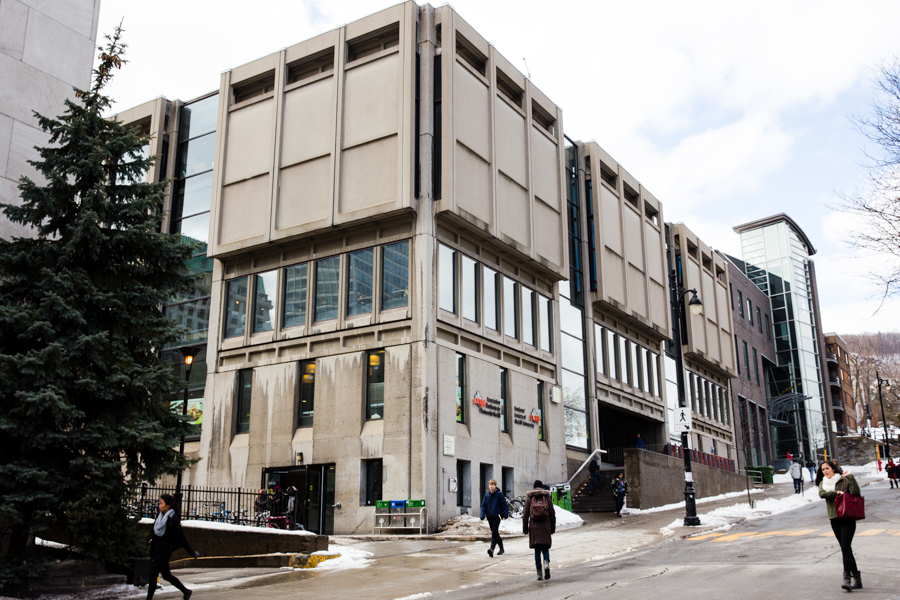After several years of negotiations, the McGill administration and the Students’ Society of McGill University (SSMU) signed the lease of the student union building last week. The agreed-upon lease spans ten years, from 2011 to 2021, and ascribes one quarter of utilities expenses to SSMU, a cost previously taken on entirely by the University.
The signed lease sees an increase in rent costs with SSMU paying $130,000 in rent for the current academic year, as well as $100,000 in energy costs. Rent will continue to increase by $5,000 a year up to $165,000 in the 2020-21 academic year, and energy costs will increase yearly according to inflation.
Under the newly-signed lease, SSMU will pay a total of $230,000 for the 2013-14 year, whereas it paid a total of $110,000 in 2010-11, the final year covered by the previous lease.
The Society will seek to cover these increased costs by introducing a non-opt-outable student fee of $6.08 per semester for full-time students and $3.04 per semester for part-time students. The fee would also be indexed to a rate of 5.6 per cent to cover yearly increases in rent and utilities. The implementation of these fees, however, is up for approval by undergraduate students in the upcoming winter referendum.
Throughout the negotiations, the duration and financial responsibilities of the building’s utilities were the main points of contention.
SSMU VP University Affairs Joey Shea told The Daily in an interview that “most other student associations within Canada pay a symbolic $1 for their rent, or their structure is different and they don’t pay anything.”
According to Deputy Provost (Student Life and Learning) (DPSLL) Ollivier Dyens, the University asked SSMU to assume the utility costs due to constraints in McGill’s financial situation.
“It’s just because it’s very expensive. We are still paying for three quarters of the utility costs, and we are having budgetary issues, same as SSMU. We have to be responsible to our constituents, the university, the way SSMU has to do the same thing with its members,” Dyens told The Daily.
Shea also said that the way McGill chose to negotiate with SSMU delayed the signing of the lease. Following various instances of miscommunication between the two parties, Shea and SSMU President Katie Larson decided to negotiate with the Deputy Provost directly.
“The most important decision that we made this year was asking McGill to send the DPSLL and not a proxy from McGill Legal to the negotiation table. Having a more clear line of communication definitely made it easier to come to agreements. It is clear to me that being able to talk to the DPSLL directly made it easier to get SSMU’s concerns and points across, since they were not going through a third party,” Larson told The Daily in an email.
The first public impasse in negotiations came in 2011, when SSMU signed the Memorandum of Agreement (MoA) – a document that outlines McGill and SSMU’s legal rights and responsibilities to each other – but decided against signing the lease. At the time, then-SSMU President Maggie Knight expressed financial concerns over a structure that required SSMU to “take over the responsibilities of the utilities.”
The 2012-13 SSMU executive, led by then-President Josh Redel, also publicly expressed concerns when it drafted a letter stating, “These negotiations could vastly affect student fees by mandating a significant increase to the SSMU base fee in order to maintain continued operations.”
“We understand that running a building costs money, but this is a contribution to the entire McGill community that SSMU needs help with in order to operate. Student life on the McGill campus has a massive value for the University, and we ask that McGill acknowledges [sic] this in ways more tangible than philosophical agreements,” the executive wrote.
Despite these disagreements, both Shea and Dyens stated that a major part of the negotiation was done in the previous years by different teams of executives and administrators.
Shea commented on the difficulty of the negotiation process, despite being satisfied at the completion of the process after four years.
“You reach a point where you realize that there is a huge power differential between SSMU and McGill and no matter what we are going to be in this building and they are pretty much setting the terms of the negotiation,” Shea said. “After four years of negotiations there comes a point where you have to sign something.”
– With files from Hera Chan

